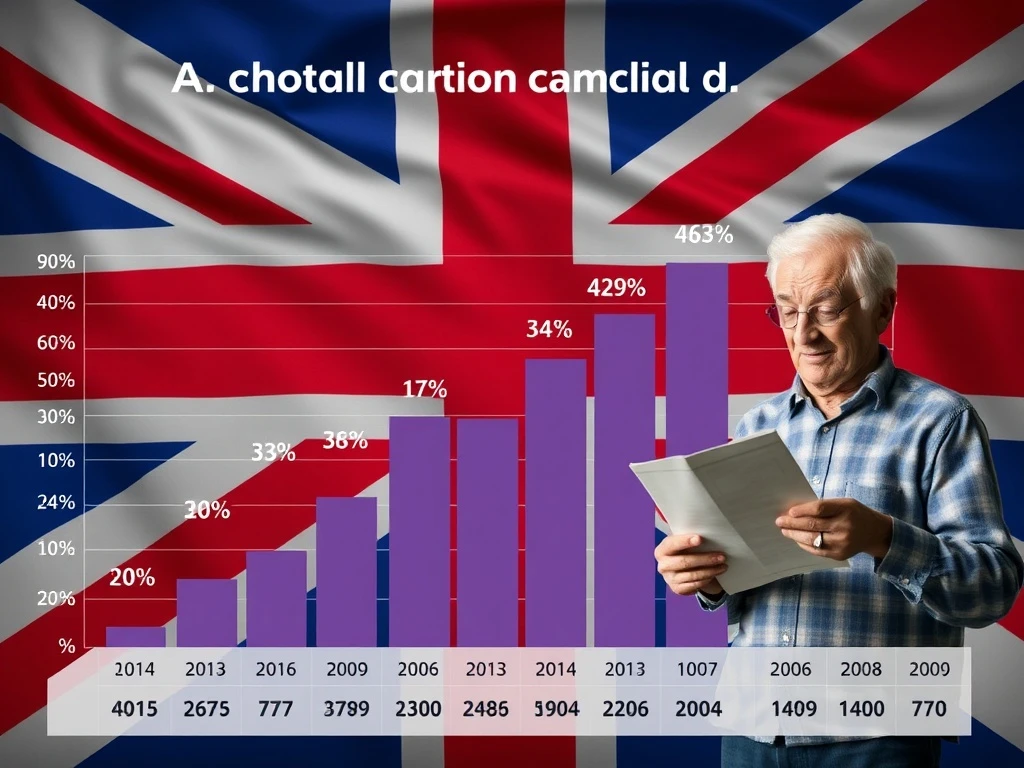Britain faces a demographic time bomb as official projections reveal pensioners will constitute over a quarter of all adults by 2075. This alarming trend threatens the nation’s fiscal stability and retirement security, creating urgent pressure on the state pension age system.
State Pension Age Demographic Crisis Escalates
Independent reviewer Suzy Morrissey’s comprehensive analysis projects a 55% surge in pensionable-age individuals over the next fifty years. Consequently, the number will reach 19.5 million people. Meanwhile, the over-85 population will nearly triple from 1.8 million to 5.1 million. This demographic shift places unprecedented strain on public finances.
Fiscal Impact of State Pension Age Challenges
The state pension cost will jump from 5% to 7.7% of GDP by the early 2070s. Currently, the state pension age stands at 66, but scheduled increases will push it to 67 by 2028 and 68 by 2046. However, previous governments hesitated to accelerate this timeline due to political sensitivity.
Political Dimensions of State Pension Age Reform
Former pensions minister Sir Steve Webb emphasizes the political volatility surrounding state pension age adjustments. “Changes have become highly politically sensitive,” he notes. Government sources even describe potential increases as “electoral suicide.” Nevertheless, the demographic reality demands difficult decisions.
Retirement Savings Crisis Deepens
Simultaneously, 15 million UK workers save inadequately for retirement. Nearly half of working-age adults set aside nothing. Specific groups face particularly severe challenges:
- Self-employed workers: 3 million save nothing
- Low-paid private sector staff: Only 25% contribute to pensions
- Ethnic minority groups: Pakistani and Bangladeshi workers show similar low participation rates
- Women: Face a 50% income gap compared to men at retirement
Automatic Enrollment Success and Limitations
The automatic enrolment scheme significantly improved participation rates since 2012. Currently, 88% of eligible employees contribute to workplace pensions, up from 55%. However, experts warn that without higher contributions and broader inclusion, Britain risks a retirement crisis. Future retirees may receive £800 less annually than current pensioners despite increasing longevity.
Government Response and Commission Review
Ministers established a new pensions commission addressing retirement poverty risks. The dilemma remains acute for policymakers: long-term affordability reforms carry immediate political costs but offer minimal short-term fiscal benefits. Consequently, balancing intergenerational fairness with Treasury burdens presents the central challenge.
FAQs: UK State Pension Age Crisis
What percentage of UK adults will be pensioners by 2075?
Pensioners will constitute 28% of over-16s by 2075, rising from the current 22%.
How will the state pension age change?
The state pension age will increase to 67 between 2026-2028 and to 68 by 2046 from the current 66.
What is the projected cost increase for state pensions?
Annual state pension costs will rise from 5% to 7.7% of GDP by the early 2070s.
How many people are not saving enough for retirement?
Approximately 15 million UK workers are not saving adequately, with nearly half saving nothing.
Which groups face the greatest retirement savings challenges?
Self-employed workers, low-paid private sector staff, ethnic minority groups, and women face particularly severe retirement savings gaps.
What improvement has automatic enrolment achieved?
Workplace pension participation increased from 55% in 2012 to 88% currently among eligible employees.


















